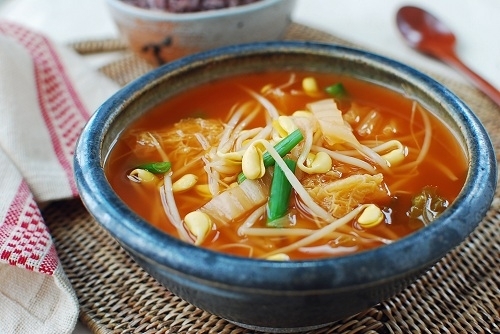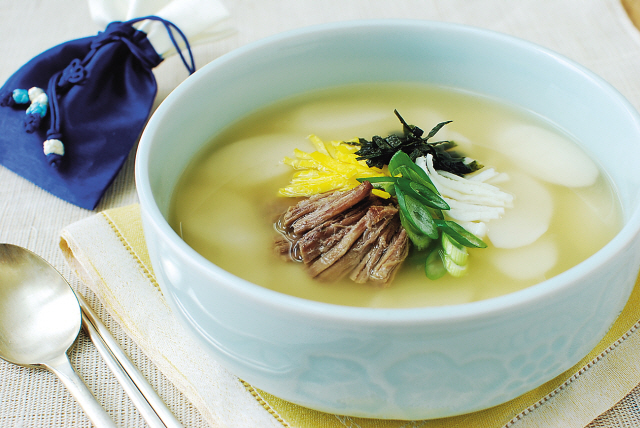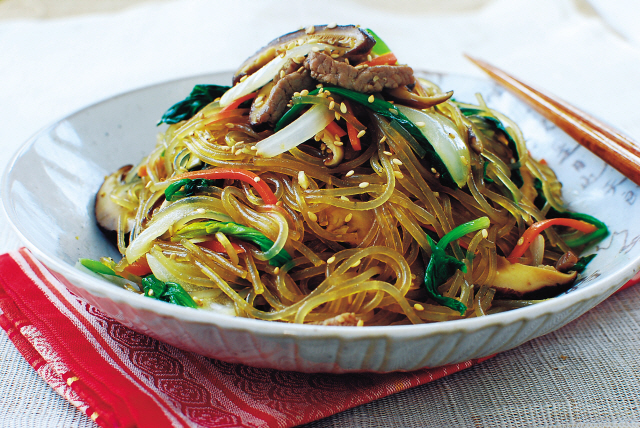Published : 2013-02-22 20:11
Updated : 2013-02-22 20:12
Updated : 2013-02-22 20:12
 |
| Kimchi kongnamul guk (Korean Bapsang) |
 hangovers in Korea. The addition of kimchi takes the soup to another level, with a spicy kick that’s strong enough to clear your sinuses. When my kids were growing up, I made this soup for them when they had a cold, just like my mother did when I was growing up. It’s best made with an anchovy stock base, but you can use beef broth or water. You should use fully fermented kimchi for this soup. The older the kimchi is, the better. Serve it separately, or over the rice to make guk bap ― a soup with rice in it.
hangovers in Korea. The addition of kimchi takes the soup to another level, with a spicy kick that’s strong enough to clear your sinuses. When my kids were growing up, I made this soup for them when they had a cold, just like my mother did when I was growing up. It’s best made with an anchovy stock base, but you can use beef broth or water. You should use fully fermented kimchi for this soup. The older the kimchi is, the better. Serve it separately, or over the rice to make guk bap ― a soup with rice in it.4 servings
Ingredients:
● 10 ― 12 medium to large dried anchovies
● 280 grams soybean sprouts (kongnamul)
● 230 grams fully fermented kimchi
● 1/4 cup juice from kimchi
● 1 teaspoon red chili pepper flakes (guchugaru) ― omit for a less spicy soup
● 2 teaspoons soup soy sauce (or 1 teaspoon saeu jeot ―salted shrimp)
● 1 teaspoon minced garlic
● 1 scallion, roughly chopped
● salt and pepper
Remove the guts of the anchovies. Soak in 8 cups of water for at least 20 minutes. Then bring it to a boil, uncovered. Reduce the heat to medium-high and boil for 10 minutes. Remove the anchovies.
Rinse the soybean sprouts a couple of times, discarding any skins that are floating. Thinly slice the kimchi into strips about 1―2 centimeters wide.
Add the sliced kimchi, kimchi juice, gochugaru and the soup soy sauce (or salted shrimp) to the anchovy broth. Bring it to a boil. Cook over medium high heat until the kimchi turns translucent, about 5 minutes.
Add the bean sprouts and garlic. Cook, covered, for 3-4 minutes. Do not open the lid while the bean sprouts are being cooked, or the raw bean smell will linger even after cooked. Once the bean sprouts are cooked, taste for salt and pepper. Add the scallions and boil for another minute. Serve separately with a bowl of rice, or serve it over the rice in a bowl.





 shapes. The white oval shape symbolizes a bright and prosperous new year. Growing up, I always loved to eat long steaming garaetteok my mother would bring home from a rice cake mill in preparation for the New Year’s feast. She would wait a couple of days for the garaetteok to turn hard before slicing them into thin oval slices. These days, pre-sliced garaetteok is widely available all year around, making the soup preparation much easier.
shapes. The white oval shape symbolizes a bright and prosperous new year. Growing up, I always loved to eat long steaming garaetteok my mother would bring home from a rice cake mill in preparation for the New Year’s feast. She would wait a couple of days for the garaetteok to turn hard before slicing them into thin oval slices. These days, pre-sliced garaetteok is widely available all year around, making the soup preparation much easier.
